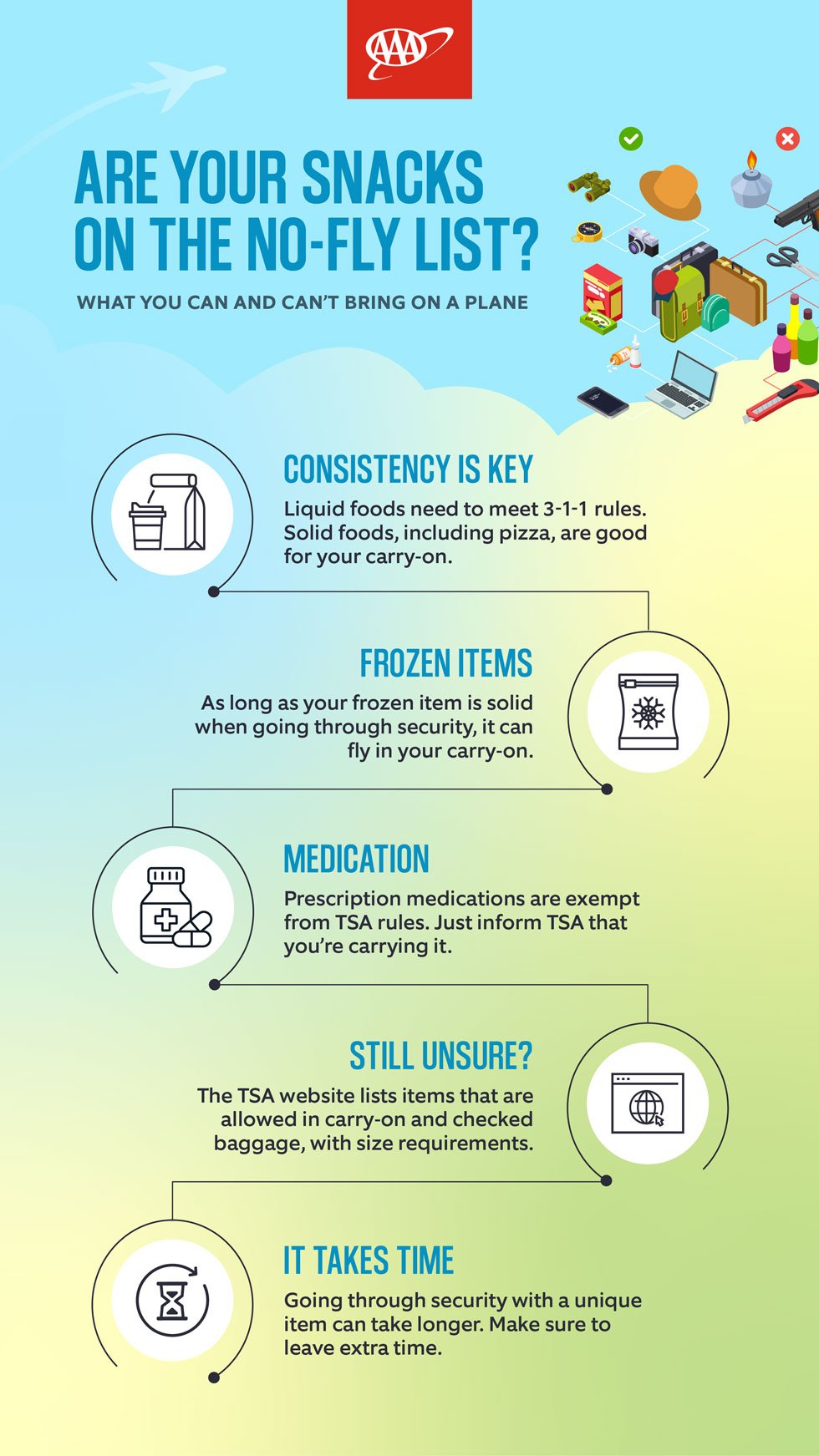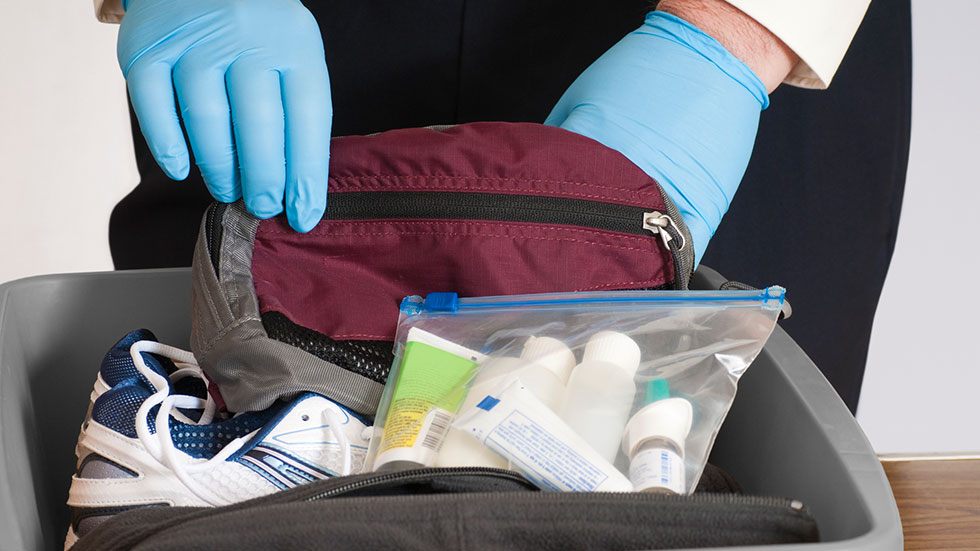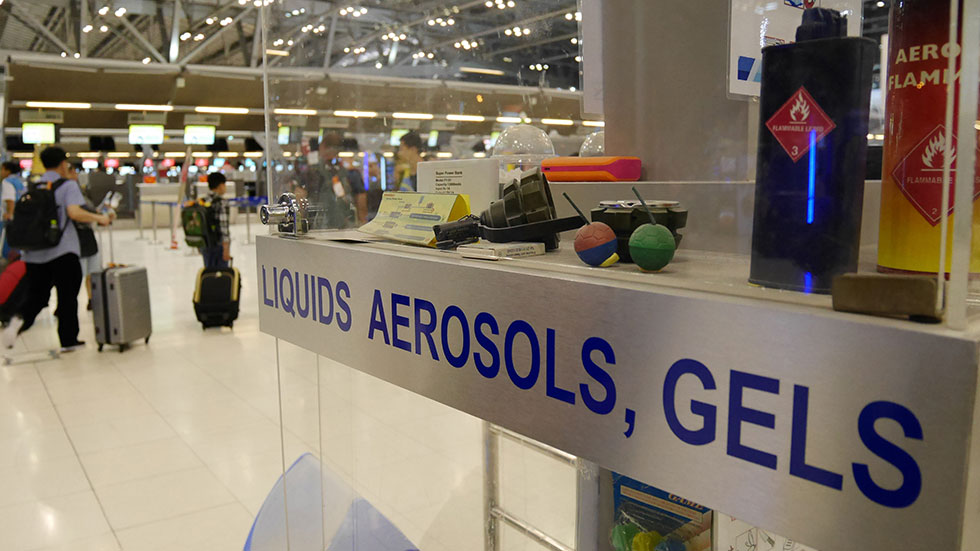
You have likely grown accustomed to the many TSA regulations, even if you're only an occasional flier. For example, the 3-1-1 rule, which specifically restricts liquids to bottles of 3.4 ounces or less, and requires they all be contained in one quart-size bag, is very familiar.
However, a circumstance may arise where you must pack something you haven't traveled with before. Whether you're a new parent or dealing with a new medical condition, knowing the applicable TSA regulation ahead of your trip will prevent delays to your journey.

Food
The deciding factor on whether a food item can go through the TSA checkpoint is usually the food item's consistency. Solid foods are good to go through security, both in carry-on and checked bags. This includes solid cheeses, protein powders, pies, cakes, and even pizza.
However, foods that are spreadable, liquid, or have a consistency that will change, are restricted. While these items are allowed, they must be transported following the 3-1-1 liquid rule. These types of food include yogurt, soup, salad dressing, and wet pet foods.
Special consideration is given to baby food (including purée pouches) and medically necessary food. Therefore, baby food and baby formula are allowed in carry-on bags, even in quantities over 3.4 ounces. Medically necessary food also includes breast milk, toddler drinks, and the beverages—water, juice, or soda—required for people with "certain health conditions such as diabetes."
Frozen items
Frozen items like "meat, seafood, vegetables, and other non-liquid food items are permitted" in carry-on bags.
Likewise, "frozen liquid items are allowed through the security checkpoint as long as they are frozen solid when presented for screening." However, if the frozen liquids are partially melted or slushy, they must follow the 3-1-1 rule.
Any ice packs accompanying frozen foods must be completely frozen. If they are partially melted, they will not be permitted. Exceptions for partially frozen ice packs exist if they are used to maintain a cool temperature for medically necessary products.

Medications
Prescription medications are exempt from typical TSA rules, just like medically necessary food items. Therefore, whether your medicine is a liquid, cream, or gel, it is exempted from the 3-1-1 rule.
You should clearly label all medication, separate it from your carry-on at the security checkpoint, and inform the TSA that you are carrying it.
If you're still unsure
The TSA website is a great, user-friendly resource if you have questions about what items are allowed beyond security checkpoints. The easily searchable site quickly displays whether an item is allowed in carry-on bags, checked baggage, or both. Any size or packing requirements are also listed. Just use the online "What Can I Bring?" tool available on the TSA site.
If your question falls in a gray area, you can get additional help from the TSA on Facebook or by reaching out to TSA on X at AskTSA. You can also just text the word ‘TRAVEL’ to AskTSA (275-872) to get help.

Allow extra time
If you have unique circumstances or items, arrive at the airport early. Even if your unique item is permitted to go through security, screening the item may take extra time. Arriving early will also allow time for any additional screening of you and/or your other luggage. Additional screening can include pat-downs, explosive testing, or other security measures.

